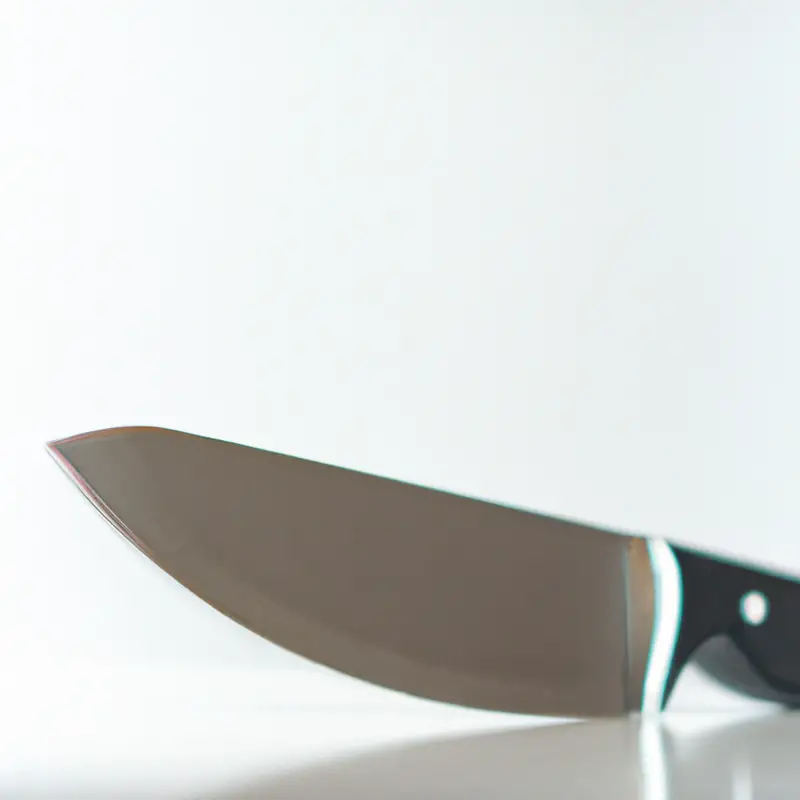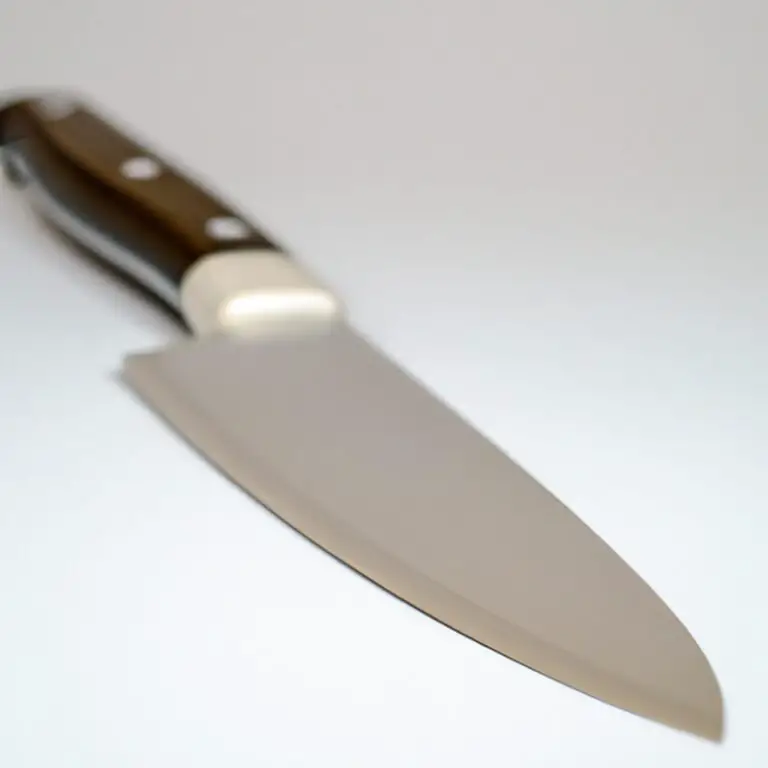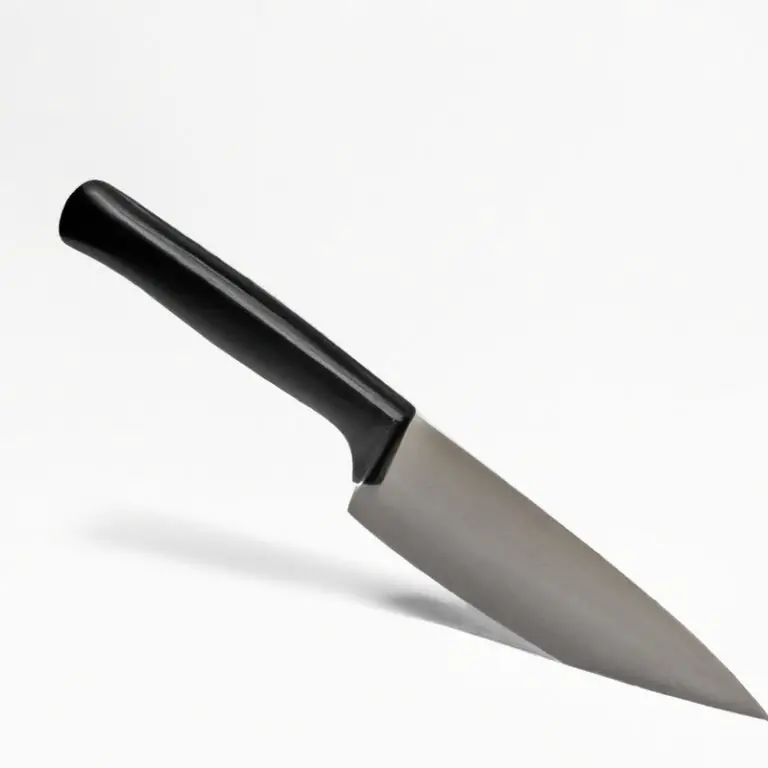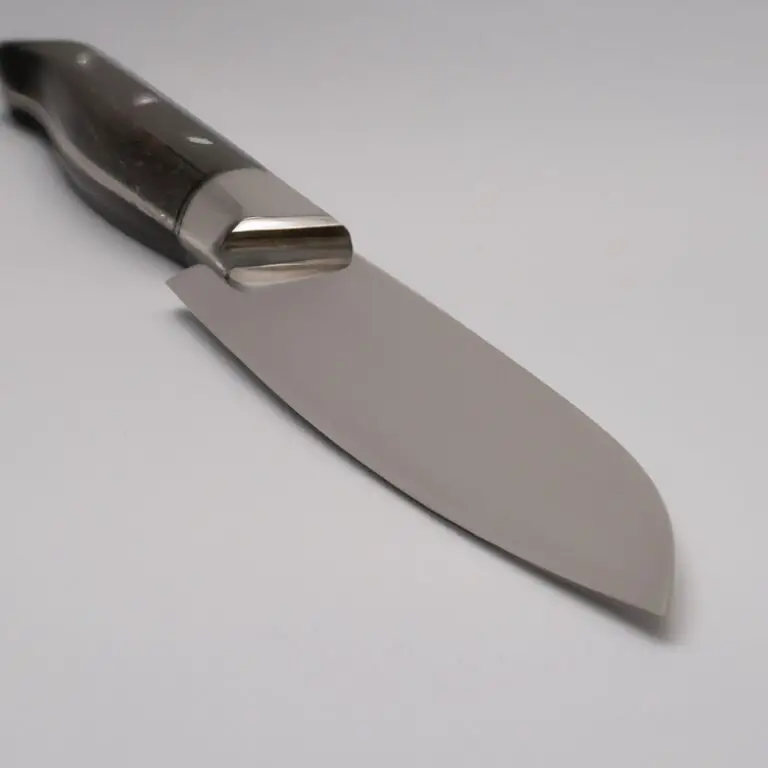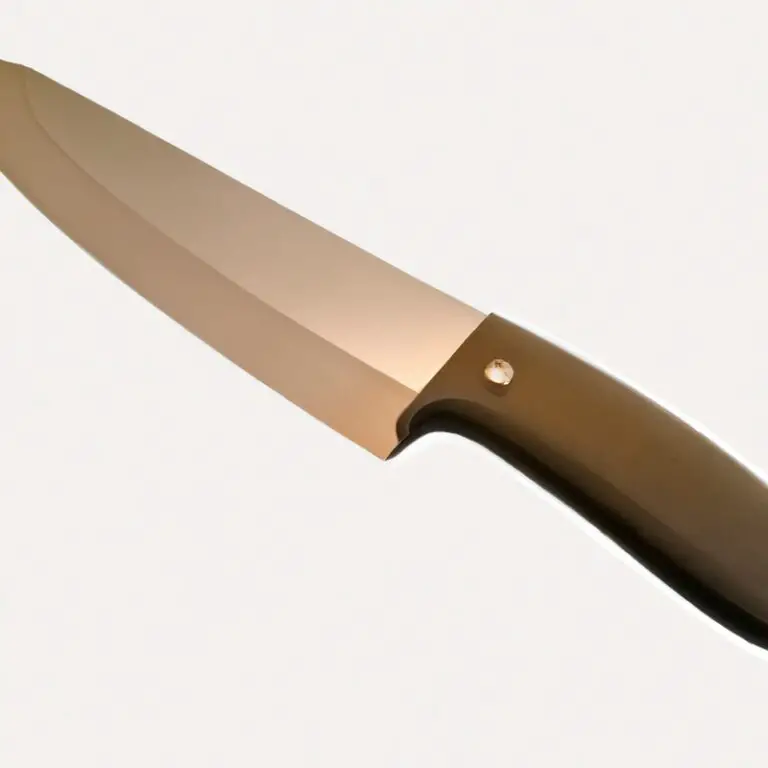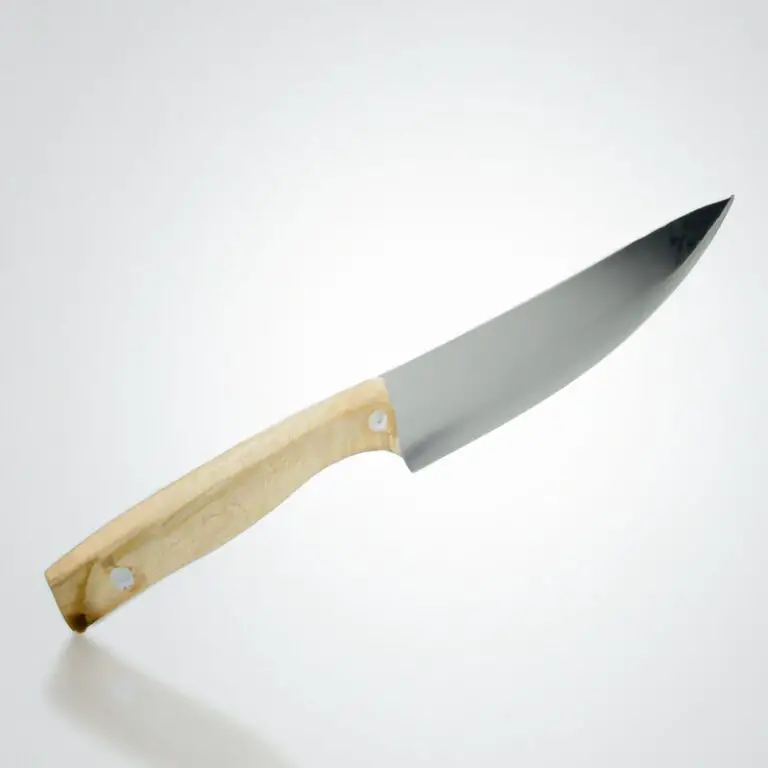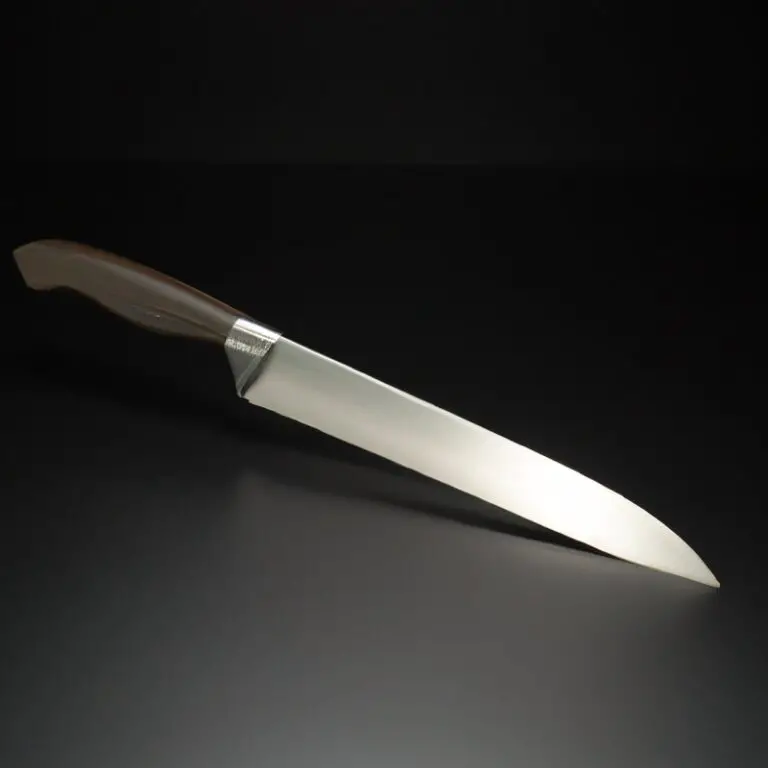How To Safely Use a Chef Knife On a Cutting Board Like a Pro!
Key Takeaways:
- Always use a stable cutting board and ensure it’s secured before using a chef knife.
- Position your fingers above the handle and away from the blade.
- Practice proper cutting techniques to reduce the chance of injury.
- Keep your chef knife sharp for easier cutting and safer use.
Are you tired of struggling with your chef knife while prepping ingredients on a cutting board? Fear not, for I am an experienced chef here to guide you on how to safely use a chef knife on a cutting board.
Before we dive into the proper techniques, let’s first understand the anatomy of a chef’s knife and its purpose on a cutting board.
We’ll also discuss the importance of choosing the right cutting board for your knife, and how to prep your food before you start using the knife on the cutting board. With these basics covered, we’ll move on to the correct way to hold a chef knife, basic cutting techniques, and more.
Let’s get started!
| Step | Description |
|---|---|
| 1 | Choose a cutting board made of wood or food-grade plastic to prevent damaging the blade of the knife. |
| 2 | Place the cutting board on a secure surface to prevent slippage while cutting. |
| 3 | Hold the chef knife with your dominant hand and grip the handle firmly. |
| 4 | Place the blade of the knife on the cutting board and position your other hand on top of the handle for stability. |
| 5 | Use a rocking motion to cut the food, lifting the blade slightly off the board with each motion to prevent dulling the blade. |
| 6 | After use, clean the knife and cutting board with soap and warm water, then dry carefully. |
Understanding the Anatomy of a Chef’s Knife and Its Purpose on a Cutting Board
A chef knife is the most versatile tool in a chef’s arsenal, designed to perform a wide range of cutting tasks in the kitchen. Understanding the anatomy of a chef knife is crucial to using it safely and efficiently on a cutting board.
A typical chef knife consists of three parts: the handle, the blade, and the tang.
The handle provides a comfortable grip for the chef’s hand while the blade is responsible for cutting through food items. The tang is the unsharpened portion of the blade that extends into the handle, providing balance and stability to the knife.
The purpose of a chef knife on a cutting board is to slice, chop, and dice food ingredients into various shapes and sizes.
It is important to note that using the wrong part of the blade for specific tasks can harm the food or even cause accidental injury. For example, the tip of the blade is ideal for delicate tasks like peeling fruits and vegetables, while the middle section of the blade is perfect for chopping through soft foods like herbs and greens.
Ultimately, understanding the anatomy of a chef knife is the foundation for using it safely and effectively on a cutting board.
By knowing the parts of the blade and their intended use, a chef can work with greater precision and ease while minimizing the risk of accidents and injuries.
The Importance of Choosing the Right Cutting Board for Your Chef Knife
Choosing the right cutting board for your chef knife is crucial for several reasons. Firstly, it protects the blade of your knife from becoming dull prematurely.
A hard surface, such as glass or metal, can damage the blade’s edge, requiring frequent sharpening.
Secondly, using an appropriate cutting board reduces the risk of bacterial contamination, which can cause foodborne illness. Porous surfaces such as wood or bamboo can absorb bacteria, making it difficult to sanitize properly.
Hard, non-porous surfaces like plastic are safer options.
Finally, a good cutting board ensures stability and reduces slippage, making it easy to perform precise cuts and reducing the risk of injury. When selecting a cutting board, consider the type of food you’ll be preparing, the knife you’ll be using, and the surface material.
By investing in the right cutting board, you’ll be able to prolong your chef knife’s lifespan, ensure food safety, and improve your overall culinary experience.
Prepping Your Food Before You Start Using the Knife on the Cutting Board
Before using a chef knife on a cutting board, it is crucial to prep your food properly. Wash and dry your fruits, vegetables, and meat thoroughly before placing them on the cutting board.
This ensures that any lingering dirt or bacteria won’t contaminate the cutting board or your knife.
Additionally, it’s best to trim any excess fat, skin, or bones before slicing or chopping to avoid damaging the blade of your chef knife. Finally, ensure that your food is stable and secure on the cutting board by placing a damp paper towel or rubber mat underneath to prevent slipping or sliding.
Proper food prepping not only ensures optimal safety but also promotes efficient and precise cutting.
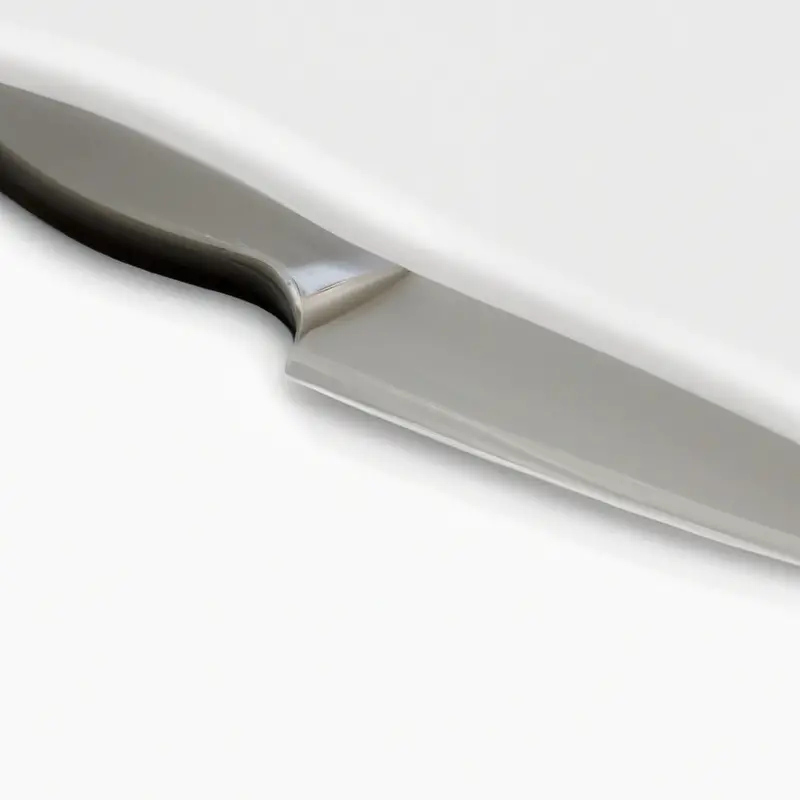
The Correct Way to Hold a Chef Knife and Maintain a Proper Grip on the Handle
To maintain control of a chef knife, always grip the handle firmly with your dominant hand. The handle should be aligned with your palm and fingers, with your thumb and index finger on opposite sides of the blade’s heel.
This provides balance and stability while cutting.
Keep your wrist straight and your elbow close to your body for better control. The blade’s sharp edge should be facing downwards towards the cutting board.
Use your other hand to hold the food in place.
Curl your fingers inwards to avoid accidentally cutting yourself. Avoid holding the knife too tightly as it may cause fatigue and muscle strain.
Instead, use a relaxed grip to achieve a fluid motion while slicing or chopping.
Practice proper hand positioning to reduce the risk of injuries and improve your efficiency in the kitchen.
Basic Cutting Techniques Every Chef Should Know for Using a Chef Knife on a Cutting Board
When it comes to basic cutting techniques for using a chef knife on a cutting board, it’s crucial to start with the right grip. The three-finger grip on the handle ensures a sturdy hold and precise control.
Once you’ve got a secure grip on the knife, it’s important to position your non-dominant hand correctly on the food you’re cutting.
The claw grip technique involves curling your fingertips under and using your knuckles to guide the knife without endangering your fingers. When it comes to cutting techniques, the rocking motion is one of the most essential.
This technique involves keeping the tip of the blade anchored on the cutting board while the heel moves up and down, making a gentle rocking pattern.
Another technique involves slicing by pulling the blade towards you and pushing it away from you in a fluid motion while sliding the food against the cutting board. Chopping is a technique that requires lifting the blade off of the board between cuts.
You can use the chop technique to cut with precision, but it requires extra care to avoid injuring yourself.
Lastly, the roll cut is a technique that primarily involves using the heel or middle of the blade to make a rolling motion to cut through food items such as vegetables and herbs. By mastering these basic cutting techniques, chefs can not only enhance their performance in the kitchen but also reduce the risk of injuries while using a chef knife on the cutting board.
How to Minimize the Risk of Accidents and Injuries While Using a Chef Knife on a Cutting Board
To minimize the risk of accidents and injuries while using a chef knife on a cutting board, follow these tips:
- Use a cutting board with a non-slip surface to keep the board steady and in place.
- Keep your cutting board clean, dry, and free of clutter, so you have ample space to work with.
- Hold the knife properly and use a pinch grip instead of gripping it tightly in your palm.
- Keep your other hand away from the knife’s path while chopping or slicing.
- Use the appropriate cutting technique for the task at hand.
- Always focus on what you are doing and avoid distractions, such as talking or texting on your phone.
- Do not rush the process, take your time and prioritize safety over speed.
By following these simple precautions, you can drastically minimize the risk of accidents and injuries while using a chef knife on a cutting board.
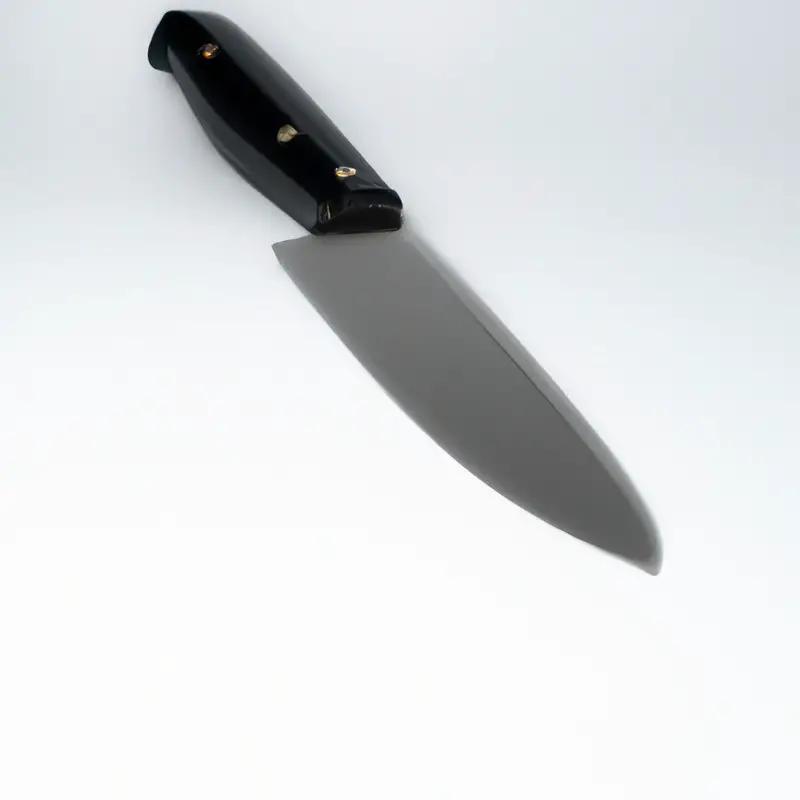
The Benefits of Sharpening Your Chef Knife Before Every Use
Sharpening your chef knife before every use provides a variety of benefits that can help improve your cutting experience. Firstly, sharpening your knife ensures that it is at peak performance, allowing for more effortless and precise cut.
A dull knife can slip and cause injuries, whereas a sharp knife can cut through food smoothly, reducing the risk of accidents.
Secondly, a sharpened knife requires less force to cut through meat, vegetables or fruits making it easier for you to do your job. Furthermore, a well-maintained knife with a sharp edge lasts longer because less pressure is applied when cutting, which reduces the chance of blade chipping.
You can sharpen your knife manually or invest in a professional sharpening tool for more accuracy and efficiency.
Overall, prioritizing the maintenance of your chef knife, including sharpening it before every use, will greatly enhance your cutting experience and ensure efficiency in the kitchen.
How to Clean and Store Your Chef Knife and Cutting Board for Optimal Performance
After using your chef knife on a cutting board, it is essential to clean and store them correctly to maintain their optimal performance. To clean your knife, use warm, soapy water and a sponge, then rinse and dry thoroughly.
Avoid using harsh cleaners or soaking the knife in water, as it can damage the blade.
To store your knife, keep it in a knife block or a designated location away from other utensils to prevent damage. For the cutting board, wash with hot, soapy water and dry completely before storing.
Avoid putting it in the dishwasher or using abrasive cleaners, as they can damage the board.
Consider using a food-safe oil or wax to condition the board occasionally, helping it maintain its lifespan. Proper cleaning and storage of your knife and cutting board will ensure they perform at their best and last for years to come.
Comparing Different Chef Knives and Cutting Boards to Find the Best Fit for You
When it comes to choosing the best chef knife and cutting board for you, there are several factors to consider. Chef knives come in various sizes, shapes, and materials, each with its own advantages and disadvantages.
The same goes for cutting boards, which can be made from wood, plastic, or other materials.
When comparing chef knives, consider the size and weight of the blade, as well as the material it’s made from. A heavier knife may provide more leverage and power, but can also be more difficult to maneuver.
Meanwhile, a lighter knife may be easier to control, but may not have the necessary strength for tough cuts.
As for cutting boards, wooden boards are durable and stylish, but may require more maintenance and can harbor bacteria if not cleaned properly. Plastic boards are easy to clean and don’t require as much maintenance, but can develop deep cuts that make them difficult to sanitize.
Ultimately, the best chef knife and cutting board for you will depend on your personal preferences and needs.
Consider factors such as the types of foods you’ll be cutting, your skill level, and how frequently you’ll be using the knife and board. Remember to choose a knife and board that feel comfortable and natural in your hand for the best results.
Final Verdict
In summary, mastering the art of safely using a chef knife on a cutting board takes time, practice, and a willingness to learn. By understanding the anatomy of your knife, selecting the right cutting board, practicing proper grip and cutting techniques, and taking safety precautions, you can minimize the risk of accidents and injuries in the kitchen.
Remember to sharpen your knife before every use, clean and store your tools properly, and compare different options to find the best fit for you.
By following these essential guidelines, you can elevate your culinary skills and become a confident and skilled chef. As you continue to refine your techniques and expand your knowledge, you can create delicious meals with precision, creativity, and safety.

